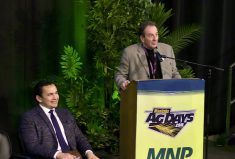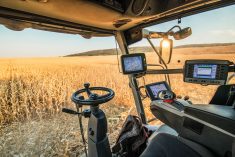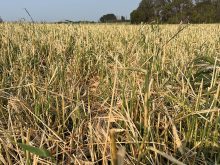“We’re in the middle of making payments and we’re doing them as quickly as we can. Our adjusters are going like crazy.”
– DAVID VAN DEYNZE, MASC
About 700,000 acres of Mani toba cropland was too wet to seed this spring, which will trigger $29 million to $30 million in payments to waterlogged farmers through excess moisture insurance (EMI), according to the insurance division of Manitoba Agricultural Services Corp. (MASC).
“We’re in the middle of making payments and we’re doing them as quickly as we can,” David Van Deynze, MASC’s manager of claim services, said in an interview July 8. “Our adjusters are going like crazy.”
Read Also

Mazergroup’s Bob Mazer dies
Mazergroup’s Bob Mazer, who helped grow his family’s company into a string of farm equipment dealerships and the main dealer for New Holland machinery in Saskatchewan and Manitoba, died July 6 from cancer.
MASC hopes to have most of the money in farmers’ hands by month’s end, Van Deynze said.
This year’s unseeded acreage is 133,000 acres more than recorded in 2004 but almost half the record 1.4 million set in 2005. Coincidentally, that year there was a record insurance payout of $295.2 million.
Farmers received $58.3 million and $24.7 million in EMI payments in 2005 and 2004, respectively.
Meanwhile, MASC is still assessing how much seeded crop was damaged by torrential rains in May and June. The focus has been on settling unseeded acreage claims, but with the drier weather and passage of time, farmers are making decisions about the condition of the crop they have.
Before farmers can destroy a crop it must be inspected by MASC, Van Deynze stressed.
“They only need to contact us if they want to go in with Roundup and spray or put the cultivator in the field in those bad spots,” he said. “So we may not ever get a real good picture of what’s drowned out through our insurance program.”
However, in some cases where crops survived, but are damaged, a crop insurance payment will be triggered at the end of the season.
MASC has received 1,500 reseeding claims this season, versus 850 and 306 in 2004 and 2005, respectively.
Of those 1,500 claims, 588 have been paid and were 460 cancelled because it was too wet to reseed. The status of the remaining 500 isn’t clear, Van Deynze said. Some will be paid, while others will be cancelled.
MASC expects 2,500 EMI claims in 2010 due to record and near-record rainfall in May and June throughout much of Manitoba.
In 2005 there were 500 reseeding claims and 3,000 in 2004.
The estimated 700,000 acres of unseeded land is close to what MASC estimated early on. It insures 90 to 95 per cent of Manitoba’s almost nine million acres of cropland, Van Deynze said.
Weeks ago MASC had estimated five to 10 per cent (500,000 to 750,000 acres) were unseeded due to excess moisture.
Under EMI, farmers who can’t seed by June 20 due to excess moisture are eligible for a $50-an-acre payment, less a deduction based on five per cent of the total acres they were planning to seed.
Say a farmer with 1,000 acres has EMI coverage on 950 acres (95 per cent of 1,000). If that farmer had 50 acres that weren’t seeded due to excess moisture he or she would not receive any compensation.
However, if 51 acres went unseeded the farmer would be paid $50 for that one acre. In this example, if the farmer couldn’t seed at all, he or she would be paid $50 an acre on 950 acres, or a total of $47,500.
RISING DEDUCTIBLE
The EMI deductible goes up five per cent the year following an EMI claim and drops by the same amount following years without a claim. So if that 1,000-acre farmer had an EMI claim last year, the deductible this year would be 10 per cent or 100 acres, meaning only 900 acres would be eligible for EMI payments.
However, farmers can pay to reduce the deductible and to increase the payout to $65 an acre from $50, Van Deynze said.
Some farmers in the Interlake haven’t been able to seed some of their land for three or four years. In that case the deductible would be 15 to 20 per cent, unless the farmer paid to reduce it.
EMI was first introduced in 1999 as an ad hoc program, but it became a regular part of crop insurance in 2000. Since then there have been claims every year, Van Deynze said.



















